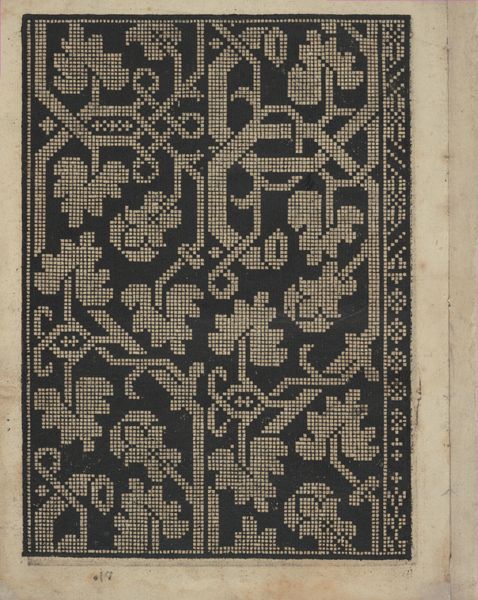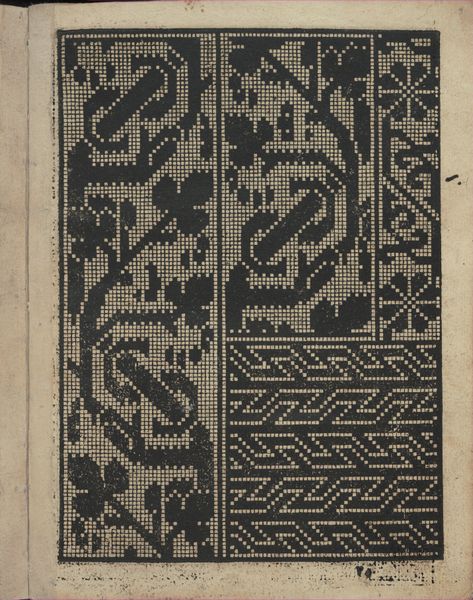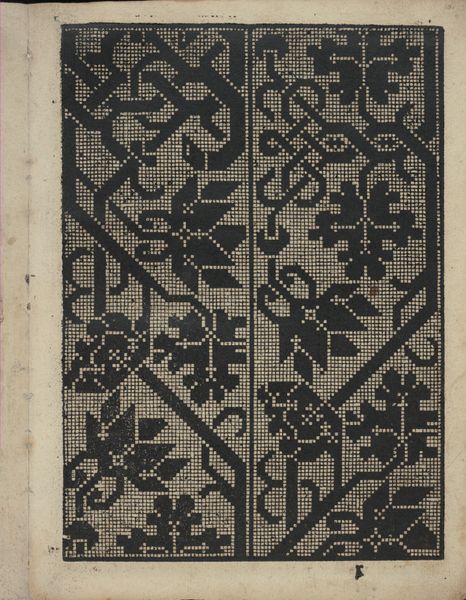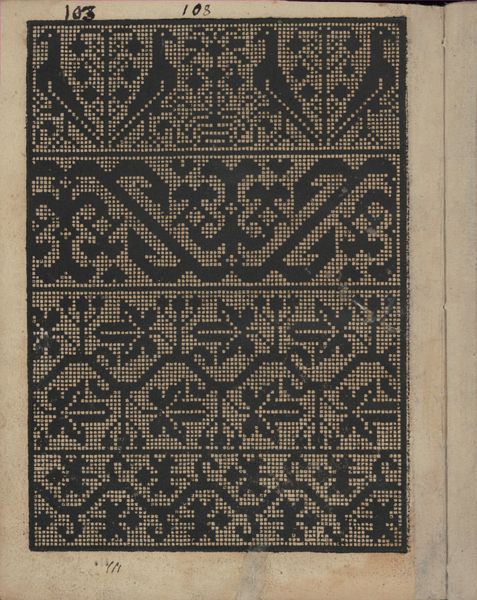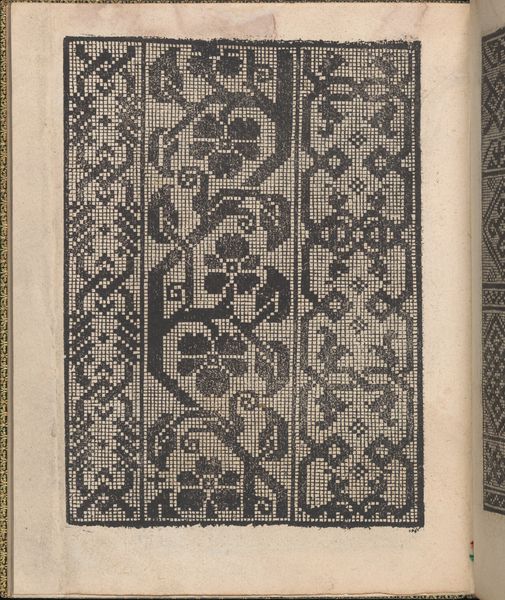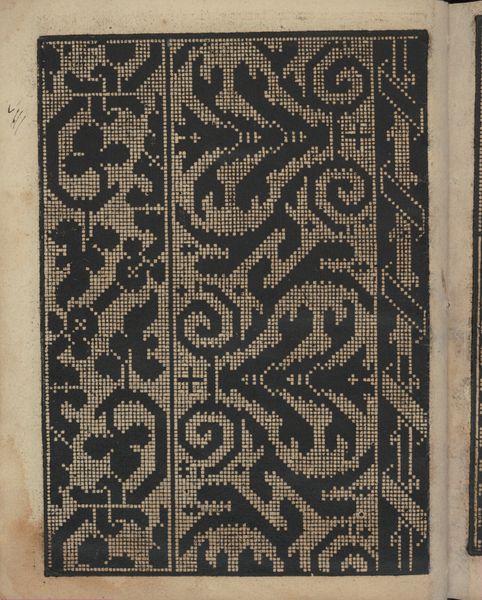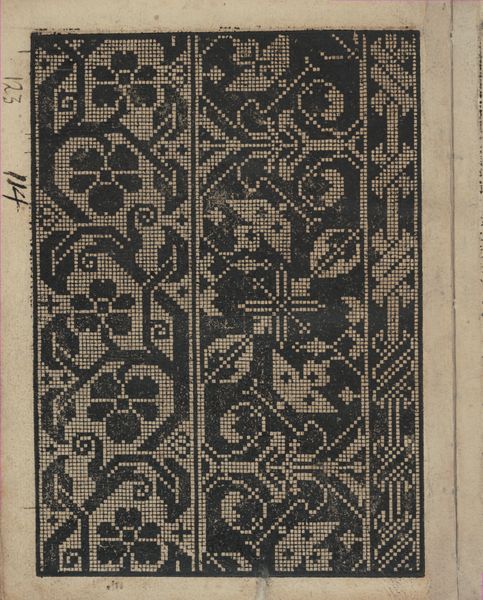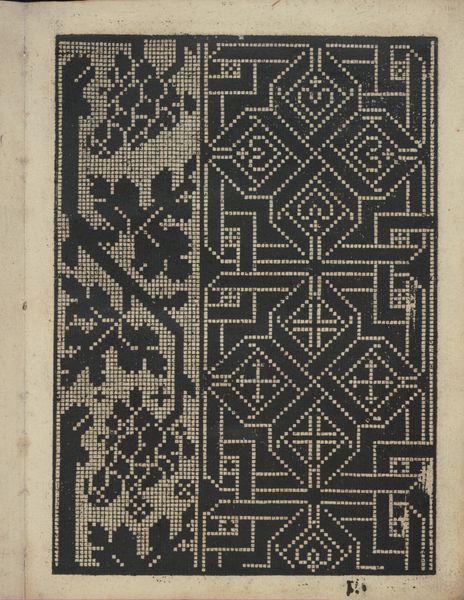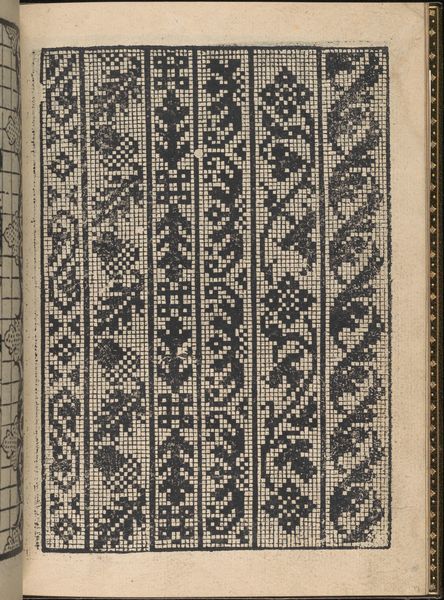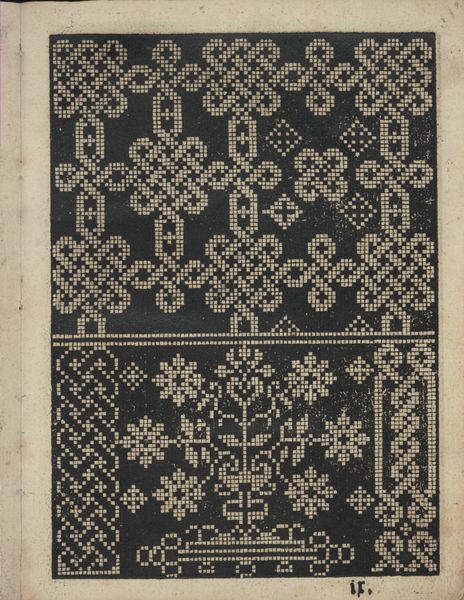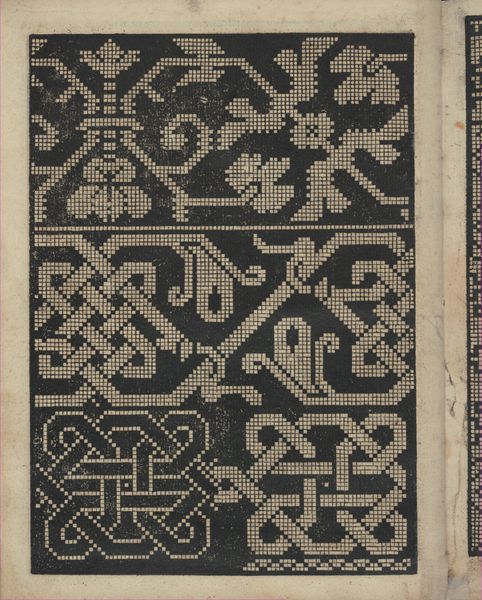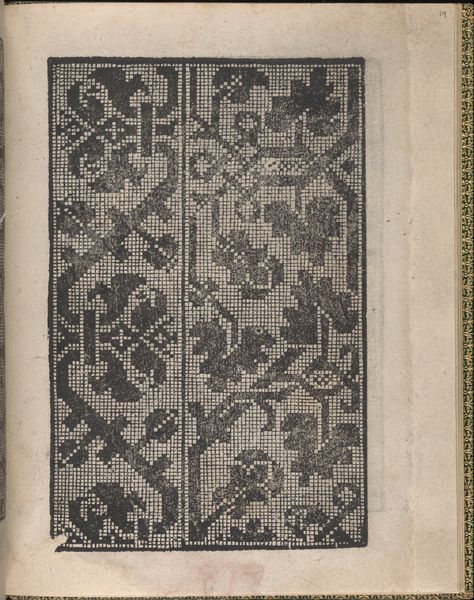
Libbretto nouellamete composto per maestro Domenico da Sera...lauorare di ogni sorte di punti, page 13 (recto) 1532
0:00
0:00
graphic-art, print, paper
#
graphic-art
# print
#
book
#
paper
#
geometric
#
line
Dimensions: Overall: 8 1/16 x 6 5/16 in. (20.5 x 16 cm)
Copyright: Public Domain
Editor: Here we have a page from *Libbretto nouellamete composto per maestro Domenico da Sera...lauorare di ogni sorte di punti*, created by Domenico da Sera in 1532. It's a graphic print on paper, showcasing geometric patterns. It looks incredibly precise and the stark contrast between black and white gives it a powerful visual impact. What can you tell me about the imagery, or the symbolism behind these kinds of patterns? Curator: The immediate thing that strikes me is how this pattern book operates as a powerful form of cultural memory. It’s more than just decoration. Consider, these weren’t mass-produced patterns; they were carefully crafted and disseminated, influencing countless textiles and other decorative arts. Do you see echoes of similar motifs in other Renaissance art forms, perhaps even architecture? Editor: Now that you mention it, the geometric structure does remind me of floor plans and the ornamental details of buildings of that era. The squares have an architectural quality, in a way. How were books like these actually used at the time? Curator: They served as a visual language, accessible across different social strata, which provided not just patterns, but also a sense of shared identity and aesthetic values. This book embodies the early modern obsession with order, balance and proportion, but the vegetal forms give it an organic touch, echoing classical roots revived during the Renaissance. It would act almost as a lexicon, wouldn't you agree, allowing makers to reproduce specific themes across varied projects? Editor: That makes perfect sense! Thinking of it as a shared language unlocks so many ideas about how designs can communicate beyond just aesthetics. I hadn’t really thought about its symbolic function like that before. Curator: It also subtly implies the aspirations and social identity of its owners – this kind of meticulous art shows refined sensibility and access to knowledge. It bridges the personal and the collective experience in really quite fascinating ways. I’m so glad you recognize this powerful function. Editor: Thanks so much for your insights! It gives me a completely different appreciation for pattern books! I'll be sure to remember how motifs embody historical continuity and cultural values.
Comments
No comments
Be the first to comment and join the conversation on the ultimate creative platform.
